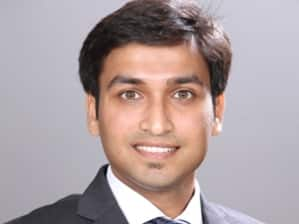India’s healthcare crisis is driven by high out-of-pocket costs, leaving many without financial protection. Healthcare financing solutions like zero-cost EMIs and instant credit are expanding access, enabling timely, affordable care and bridging critical coverage gaps.

Gaurav Gupta, CEO, CarePay
India’s healthcare paradox is stark. On one end, there are world-class hospitals, while on the other are financially devastating treatment costs. Despite advances in medical infrastructure and healthtech innovation, 48% of India’s total healthcare expenditure remains out of pocket. Subsequently, the medical emergencies translate not just into a health crisis but also into financial distress for millions of households. In rural India and even urban settings, sudden hospitalization or critical care often leads to debt, asset liquidation, or deferred treatment.
This results in alarming consequences, as, according to National Health Accounts data, nearly 17% of Indian families incur catastrophic health expenditure annually. As a result, higher healthcare costs are pushing millions into extreme poverty. In tandem, the government has launched Ayushman Bharat and various state insurance schemes; however, the problem remains unsolved.
The Uninsured Population and Coverage Gap
India's health insurance market remains underdeveloped. Despite the proliferation of insurance products, approximately 38% of India’s population lacks any health insurance, which clearly indicates that over 500 million individuals pay entirely out-of-pocket for all medical services. Among these, an estimated 30%, i.e., around 40 Cr people, are the “missing middle” who earn too much to qualify for subsidized schemes but are unable to afford private premiums.
Due to significantly higher out-of-pocket costs, households face challenges in availing certain treatments that are not covered by standard plans, such as cosmetic procedures (INR 10,000–INR 300,000), hair restoration (INR 40,000–INR 150,000 per session, often over INR 110,000 yearly), dental care (braces INR 10,000–INR 300,000; root canals INR 4,000–INR 8,000 per tooth), and IVF (INR 100,000–INR 300,000 per cycle, up to INR 500,000+). These OOP costs delay or deter millions from accessing treatments that improve quality of life and well-being.
Healthcare Financing Emergence
This is where healthcare financing solutions are emerging to revolutionize healthcare access. It acts as a catalyst for raising awareness around the need for affordable care through innovative financing solutions, including digital payment platforms like zero-cost EMIs, instant credit at the point of care, blended finance models, and specialized financing for specific healthcare needs to make healthcare more equitable.
These platforms transform healthcare financing by embedding digital lending within the billing systems of providers. They operate under a subvention model, allowing healthcare providers to absorb the financing cost as a marketing expense. This enables patients to break down large medical bills into easy monthly installments at zero percent interest. With AI-based credit assessments, these platforms grant instant approvals and make the process both quick and accessible.
These solutions play an instrumental role in eliminating long waiting periods for insurance and offer instant financial assistance, especially for emergency and other procedures that traditional insurance providers do not cover, such as fertility treatments, dental work, bariatric surgery, and even cosmetic dermatology.
Expanding Access and Choice
The emergence of healthcare financing opens more avenues for patients for their financial readiness to get treated. This is especially significant in public healthcare systems, which are often overburdened due to lack of resources. By expanding the pool of financial tools, patients get accessibility to treatment in private hospitals and specialty clinics, bridging the gap between public infrastructure limitations and private healthcare availability.
As a result, the missing middle, which earlier postponed surgeries due to exorbitant upfront costs, now opts for timely and quality care, without compromising on the time and standard of the treatment. This turns the reactive healthcare approach into a patient-first preventive care approach, allowing healthcare providers to reduce treatment costs and increase affordability and improve patient retention. This creates a win-win for both ends of the healthcare value chain.
Final Thoughts
India’s out-of-pocket healthcare crisis is a structural and systemic challenge. On one end, traditional insurance will continue to evolve and expand its reach, while healthcare financing is emerging as a complementary force to reshape how Indians plan, access, and pay for health services. Hence, the future lies in implementing hybrid models where financing, insurance, and digital health converge to ensure patient-centric care.
By continuing you agree to our Privacy Policy & Terms & Conditions
